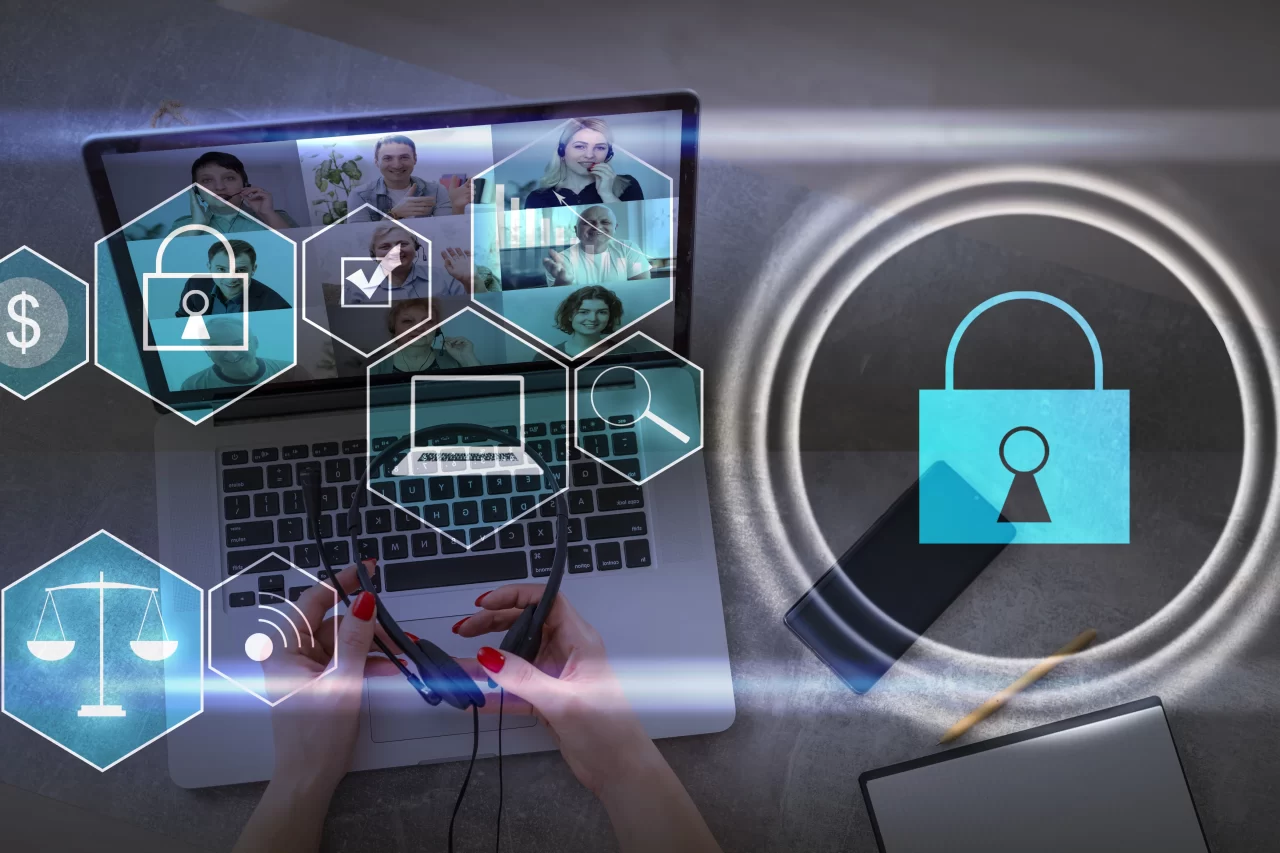Introduction to cybersecurity risk management
One of the main barriers to reducing cybersecurity risk is the enormity of the problem. Businesses of all stripes are finding it challenging to stay afloat due to the continually expanding amount of information, gadgets, and applications that need to be protected. The expansion of remote jobs and cloud computing has also made it harder to maintain control over critical information.
Cyber attacks are not restricted to a particular business or area, which makes issues worse. Anyone, wherever, at any moment, can experience them. Organizations now feel pressure to take proactive steps to manage their cybersecurity risks as a result of this. The stakes are high, and a breach could have devastating repercussions, including lost revenue, reputational harm, and legal liabilities.
What is risk management in cyber security?
A business’s digital assets are identified, current security measures are reviewed, and solutions are put in place to keep what is working or reduce security risks that could endanger the company. This process is known as cybersecurity risk management.
A risk management approach recognizes that an organization cannot completely eliminate all system flaws or prevent all online threats. Developing an IT risk management strategy aids organizations in being the first to respond to the most serious vulnerabilities, threat patterns, and assaults.
Everyone in the organization has a part to play in enterprise cyber risk management; it is not just the responsibility of the security team. Employees and business unit leaders frequently perceive business risk management from the perspective of their own business function. They need to have the broad viewpoint required to address risk in a thorough and consistent manner.
Cybersecurity Risk Management Strategy:
Risk management is the deliberate acceptance, avoidance, mitigation, and transfer of hazards.
The four quadrants of a cybersecurity risk management plan are used to provide complete and ongoing Digital Risk Protection (DRP). DRP platforms locate, track, and analyze threats in real-time using a variety of reconnaissance techniques. A DRP system may evaluate risks and forewarn of attacks using both indicators of compromise (IOCs) and indications of attack (IOAs) intelligence.
Let’s check them out:
- Identifying or mapping risk – Identifying risk involves assessing the environment around the organization to find any present or potential threats that might have an impact on daily operations.
- Assessing risk or monitoring – Assessing risks involves determining their likelihood of having an impact on the organization and the potential severity of that impact.
- Controlling or mitigating risk – Control risk through defining strategies, practices, tools, or other actions that can assist the organization in reducing the risks.
- Reviewing or managing controls – Controls should be reviewed frequently to assess how well they are minimizing risks and to add or modify controls as necessary.
Why is cybersecurity risk management important?
It is significant since it aids in the assessment of a company’s current cybersecurity risk profile. This assists in future decisions that the security organization will make to lower the risk and remedy vulnerabilities.
Understanding the dangers that your organization faces is crucial.
Three different levels of awareness can be used to evaluate awareness:
- Situational awareness: An organization is aware of the operational and crucial aspects of implementing an information security plan, including people, data, and processes.
- Situational ignorance: Businesses make assumptions about how people, data, and processes will affect the situation. Although they may be putting in place security measures and awareness training, there is no clear procedure or plan that is in line with risk reduction and mitigation.
- Situational arrogance: Businesses continue to invest heavily while frequently being breached and compromised. They may even take into account people, data, and processes, but because of other budgetary priorities, they do nothing.
Cybersecurity risk management advantages
The advantages of doing a cybersecurity risk assessment
- Identify Weaknesses: Assessments of cybersecurity risks can reveal potential dangers coming from both inside and outside an organization. Your current security arrangement’s shortcomings and constraints will be made clear by the information gathered during risk assessment, giving you the chance to make improvements.
- Reduce Potential Security Risk: Future dangers to any organization are uncertain, but in this day and age of sophisticated internet usage, you must be ready for the worst. By doing a cybersecurity risk assessment, you can identify the entry points that hackers can use to break into your system and create a sound plan for protecting your company and responding to potential assaults.
- Strengthen Reputation: Protecting your clients’ data is a surefire approach to win their trust. Data breaches are becoming more frequent these days, so if your company can protect your customers’ information by regularly doing a cybersecurity risk assessment, they will appreciate it. Long-term business and increased customer loyalty will benefit you.
- Enhance Interaction: A risk assessment can improve communication between your employees and with customers. Management, staff, and customers are all interested in an organization’s cybersecurity.
- Keep your competitive edge: Data protection for clients and third parties is just the beginning of cyber security. Protecting the confidential business and unique research of your organization also requires doing a risk assessment.
- Improved Security Procedure: Employees, managers, and others who have access to the company’s IT resources must be represented on the IT department or security team in your company. An organization’s IT security plan can be made more certain by using a cyber security risk assessment technique to help create effective security standards and safety rules.
Cyber security risk management framework
Organizations can assess, monitor, and define security policies and procedures to address threats with the aid of a cyber risk management framework.
There are various frameworks for managing cyber hazards, and each one offers guidelines that organizations can use to pinpoint and reduce risks. Below are some of the cyber risk management framework
- CSF NIST: A well-known framework is the NIST CSF (National Institute of Standards and Technology Cybersecurity Framework). A complete collection of best practices that standardize risk management are offered via the NIST CSF framework. Protect, detect, identify, respond, and recover are mapped out as the key activities and results for cybersecurity risk management.
- ISO 27001: The ISO/IEC 270001 was developed in collaboration between the International Electrotechnical Commission (IEC) and the International Organisation for Standardisation (ISO).
- A collection of standards that may be certified and are designed to systematically manage information system risks are provided by the ISO/IEC 270001 cybersecurity framework.
- DoD RMF: The Risk Management Framework (RMF) for the Department of Defence (DoD) outlines the standards that DoD entities must follow when evaluating and managing cybersecurity threats.
- FAIR Framework: Enterprises can assess, analyze, and comprehend information hazards with the aid of the Factor Analysis of Information Risk (FAIR) framework, which is defined in this regard.
Some Advice for Creating Your Cyber Risk Management Plan
- Create a culture of risk management: Leaders must instill a culture of risk management and cybersecurity throughout the company. Leaders and managers can assure proper staff involvement, accountability, and training by designing a governance structure and conveying intent and expectations.
- Maintain Good Cyber Hygiene: The first step in managing cyber risk is to implement proper cyber hygiene practices. The idea of personal hygiene in public health literature is analogous to the concept of cyber hygiene in cybersecurity.
- Ensure You Follow All Applicable Regulations: The requirements for regulatory compliance increasingly include risk management, notably third-party risk management and vendor risk management.
- Promote many points of view: The results of penetration testing, artificial intelligence, machine learning algorithms, personal experience, or company history are just a few examples of the single viewpoints from which risk is all too frequently regarded.
- Create a framework for cybersecurity: It’s crucial to put in place a suitable cybersecurity architecture for your business. Usually, your industry’s adopted standards or legal requirements will determine this.
- Establish a Reliable Process for Risk Assessment: Understanding, managing, controlling, and mitigating cyber risk throughout your organization are all goals of a cybersecurity risk assessment.
Any organization’s risk management plan and data protection initiatives must include a repeatable process.
Conclusion:
Today, managing risk across the organization is more challenging than ever. The proliferation of third-party suppliers, developing technologies, and an ever-expanding minefield of rules present organizations with challenges as modern security landscapes change often.
In a time of constant, unmatched change where risks and vulnerabilities are increasing at an alarming rate, it hardly seems fair. Smart and prosperous organizations will continue to hold their own in the fight to manage IT risk and uphold security across the company, nevertheless, thanks to analytics, collaboration/communication/issue management tools, and third-party risk management frameworks.
Are you tired of the complexities and manual processes involved in managing cyber risks for your business? ASPIA has the perfect solution for you! ASPIA cyber risk management software automates and simplifies the entire process, making it easy for you to keep your business secure. Get started today by contacting us to learn more about our automated cyber risk management solutions.





